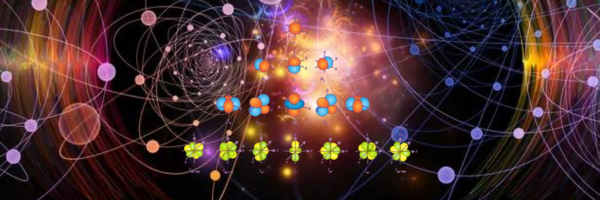Quantum mechanics, the branch of physics that deals with the behavior of matter and energy on the smallest scales, is a realm where traditional physics concepts often reach their limits. Within this intricate framework lies the concept of quantum numbers, fundamental to understanding the properties and behavior of subatomic particles. In this comprehensive guide, we’ll delve into the nature of quantum numbers, exploring their significance and applications in the quantum world.
The Basics of Quantum Mechanics
Before we explore quantum numbers, it’s crucial to grasp the foundational principles of quantum mechanics. At its core, quantum mechanics describes the behavior of particles at the atomic and subatomic levels. Unlike classical physics, where properties like position and momentum are precisely determined, quantum mechanics introduces uncertainty and probabilistic outcomes.
Introduction to Quantum Numbers
Quantum numbers are mathematical values that specify certain properties of particles and their behavior within an atom. They arise from the solution of Schrödinger’s wave equation, which describes the wave-like behavior of particles in quantum mechanics. These numbers help characterize the unique quantum states of particles, such as their energy, angular momentum, and spin.
Types of Quantum Numbers
- Principal Quantum Number (n): The principal quantum number, denoted by ‘n,’ determines the energy level of an electron in an atom. It defines the size and overall energy of an electron’s orbital. Higher values of ‘n’ correspond to orbitals that are farther from the nucleus and have higher energy.
- Angular Momentum Quantum Number (l): The angular momentum quantum number, represented by ‘l,’ describes the shape of an electron’s orbital within a given energy level. It determines the orbital angular momentum and can take integer values ranging from 0 to (n-1), indicating different orbital shapes (s, p, d, f).
- Magnetic Quantum Number (ml): The magnetic quantum number, denoted by ‘ml,’ specifies the orientation of an orbital in space relative to a magnetic field. It ranges from -l to +l in integer steps and defines the number of orbitals within a subshell.
- Spin Quantum Number (ms): The spin quantum number, symbolized by ‘ms,’ describes the intrinsic spin of an electron. It can have two possible values: +1/2 (representing spin-up) or -1/2 (representing spin-down). The spin quantum number is associated with the electron’s magnetic moment and determines its behavior in a magnetic field.
Significance and Applications
Quantum numbers play a crucial role in understanding the electronic structure of atoms and molecules. They provide valuable information about the arrangement of electrons within an atom, including their distribution in orbitals and their interactions with external fields. Additionally, quantum numbers are essential for predicting and interpreting various spectroscopic phenomena, such as the emission and absorption of light by atoms.
Quantum Numbers in Quantum Computing
In the emerging field of quantum computing, quantum numbers take on new significance. Quantum bits, or qubits, are the basic units of information in quantum computers. These qubits are characterized by their quantum states, which are akin to the quantum numbers of subatomic particles. Harnessing the properties of qubits and manipulating their quantum states is crucial for performing quantum computations and achieving quantum advantage over classical computers.
Conclusion
Quantum numbers are fundamental concepts in quantum mechanics, providing insights into the behavior and properties of particles at the atomic and subatomic levels. They serve as mathematical descriptors that characterize the unique quantum states of particles within atoms, influencing their energy, angular momentum, orientation, and spin. Understanding quantum numbers is essential for unraveling the mysteries of quantum mechanics, from the electronic structure of atoms to the promise of quantum computing. As researchers continue to explore the frontiers of quantum theory, the role of quantum numbers remains central to unlocking the secrets of the quantum world.
